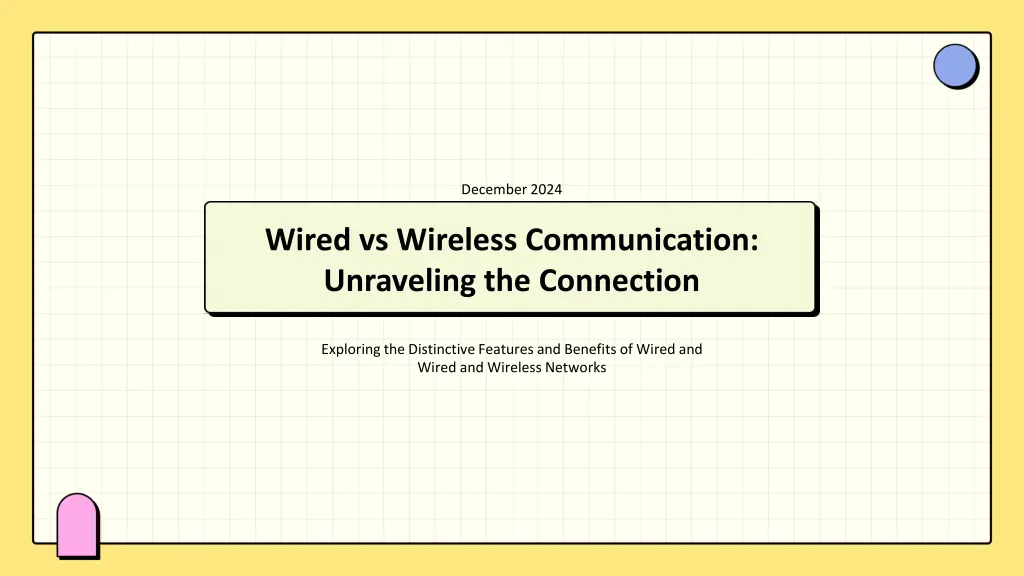
Wired vs Wireless Communication: Exploring the Differences and Benefits
Dive into the world of wired and wireless communication networks in December 2024. Understand the distinct features, advantages, and examples of both wired and wireless networks. Discover the pros and cons of each, from stable connections and high-speed data transfer in wired networks to the flexibility and mobility of wireless networks. Unravel the connection between wired and wireless communication and explore future trends in communication technologies. Embrace both wired and wireless technologies for a connected future.
Download Presentation

Please find below an Image/Link to download the presentation.
The content on the website is provided AS IS for your information and personal use only. It may not be sold, licensed, or shared on other websites without obtaining consent from the author. If you encounter any issues during the download, it is possible that the publisher has removed the file from their server.
You are allowed to download the files provided on this website for personal or commercial use, subject to the condition that they are used lawfully. All files are the property of their respective owners.
The content on the website is provided AS IS for your information and personal use only. It may not be sold, licensed, or shared on other websites without obtaining consent from the author.
E N D
Presentation Transcript
December 2024 Wired vs Wireless Communication: Unraveling the Connection Exploring the Distinctive Features and Benefits of Wired and Wired and Wireless Networks
Table of Contents Introduction to Communication Networks 5 Conclusion and Future Trends 1 2 Wired Networks Explained Wireless Networks Uncovered 3 Comparative Analysis 4
Introduction to Communication Networks 1. Wired communication involves data transmission through physical cables connecting devices. 2. Wireless communication transmits data through the air using electromagnetic waves without cables. 3. Communication networks are essential for connecting devices and enabling data exchange. 4. This presentation will explore the differences, Photo by Pexels advantages, and examples of wired and wireless networks.
Wired Networks Explained 1. Wired networks use physical cables to connect devices devices and transfer data. 2. Common examples include telephone lines, cable TV, and fiber optic networks. 3. Wired networks offer stable connections and high data transfer speeds. 4. They require physical infrastructure and can be less Photo by Pexels flexible than wireless networks.
Wireless Networks Uncovered 1. Wireless networks transmit data through the air using using electromagnetic waves. 2. Includes radio frequencies, infrared, Bluetooth, Wi-Fi, and satellite communication. 3. Wireless networks offer flexibility and mobility without the need for cables. 4. They can be susceptible to interference and may have Photo by Pexels lower data transfer speeds compared to wired networks.
Comparative Analysis 1. Wired networks generally provide faster and more stable stable connections. 2. Wireless networks offer greater flexibility and mobility for users. 3. Wired networks require more physical setup, while wireless networks are easier to install. 4. Wired networks are typically more secure, but wireless Photo by Pexels networks have advanced security protocols.
Conclusion and Future Trends 1. Recap of the main differences and benefits of wired and wired and wireless networks. 2. Exploration of new technologies like 5G and their impact on communication networks. 3. Predictions on how communication networks will evolve in the coming years. 4. Encouragement to embrace both wired and wireless Photo by Pexels technologies for a connected future.
